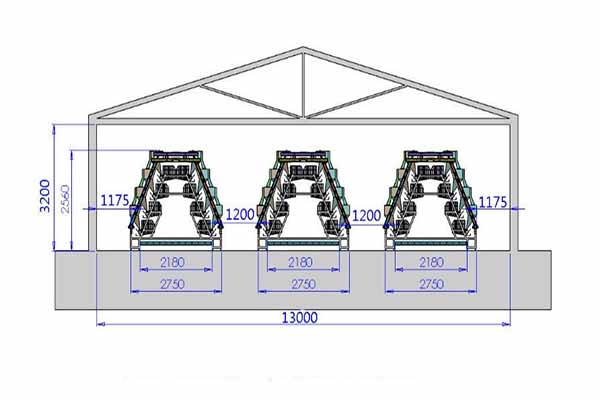What to Check During Cage Installation: A Comprehensive Guide for Poultry Farm Owners and Investors
Introduction
Installing cages in a poultry farm is a critical step that requires meticulous planning and attention to detail. Ensuring that the installation process is done correctly can significantly impact the health and productivity of your flock. In this article, we will discuss the key factors to consider during cage installation to help you create a safe and efficient environment for your chickens.
1. Structural Integrity
Before installing the cages, it is crucial to inspect the structural integrity of the entire system. This includes checking for any signs of damage, such as cracks or warping, in the materials used for the frames and walls. Ensuring that the structure can support the weight of the chickens and the equipment is essential for safety.
2. Proper Placement
The placement of the cages is crucial for the overall health of the chickens. Cages should be spaced out adequately to prevent overcrowding and to allow for proper air circulation. It is recommended to keep a minimum distance of 2 feet between each cage to prevent the spread of diseases.
3. Ventilation and Temperature Control
Proper ventilation is essential for maintaining a healthy environment in the poultry farm. Ensure that the cages are installed in a way that allows for sufficient airflow. Additionally, install temperature control systems to keep the chickens comfortable throughout the year.
4. Water and Feed Distribution
Access to clean water and balanced feed is vital for the health and productivity of the chickens. Check that the water and feed systems are properly installed and functioning correctly. Regular maintenance and cleaning of these systems are also essential to prevent disease outbreaks.
5. Lighting and Egg Collection
Proper lighting is essential for the overall health and productivity of chickens. Ensure that the lighting system is installed correctly and provides the appropriate amount of light for the chickens. Additionally, check the egg collection system to ensure that it is efficient and hygienic.
6. Biosecurity Measures
Implementing biosecurity measures is crucial to prevent the spread of diseases. Ensure that the installation process includes measures to prevent the entry of pests and pathogens into the poultry farm. This includes checking for proper drainage and the installation of screens to prevent rodents and insects from entering the cages.
Conclusion
Installing cages in a poultry farm is a complex process that requires careful attention to detail. By following these guidelines, you can create a safe and efficient environment for your chickens. For professional advice and assistance with your poultry farm, contact LIVI Mechanical today. We offer free chicken farming design plans and equipment quotes to help you get started on the right foot.





